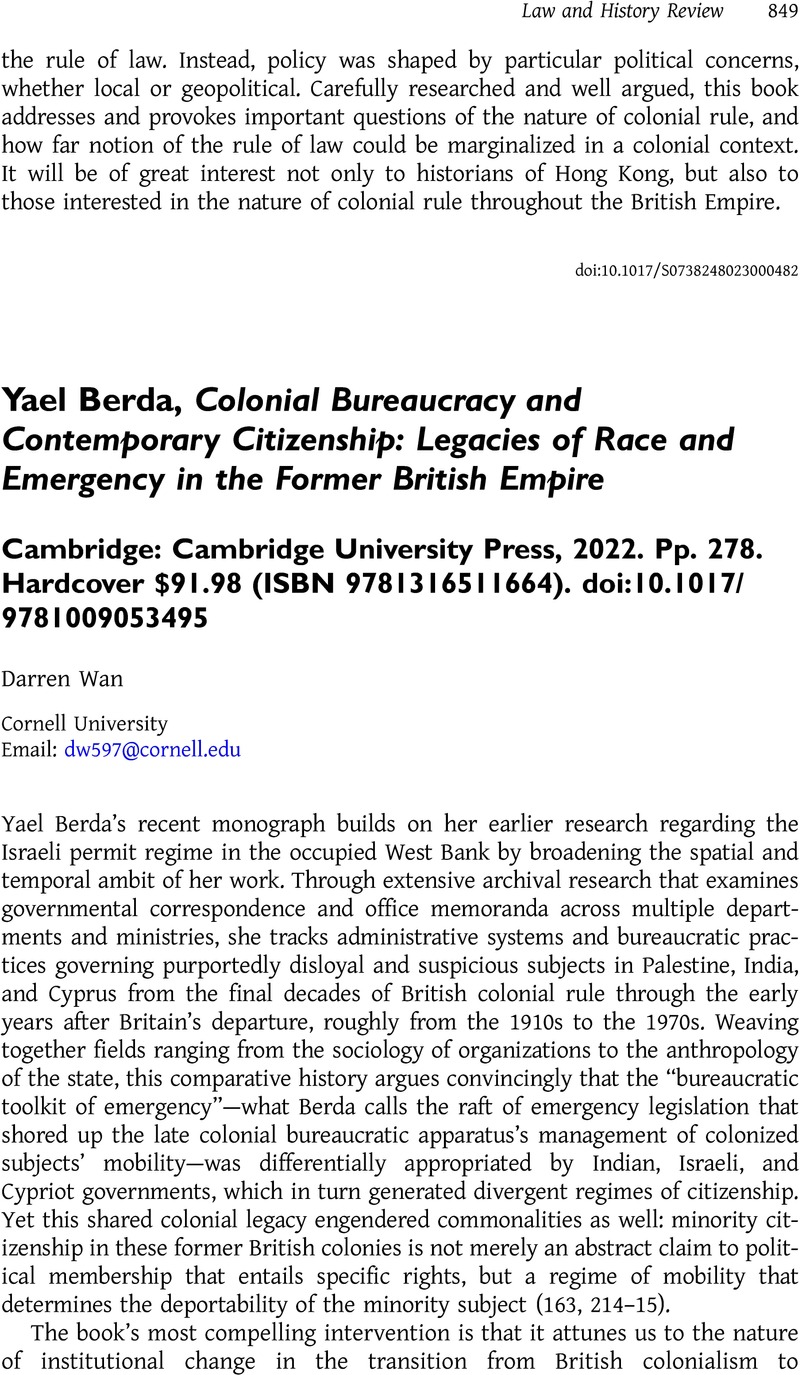No CrossRef data available.
Article contents
Yael Berda, Colonial Bureaucracy and Contemporary Citizenship: Legacies of Race and Emergency in the Former British Empire Cambridge: Cambridge University Press, 2022. Pp. 278. Hardcover $91.98 (ISBN 9781316511664). doi:10.1017/9781009053495
Review products
Yael Berda, Colonial Bureaucracy and Contemporary Citizenship: Legacies of Race and Emergency in the Former British Empire Cambridge: Cambridge University Press, 2022. Pp. 278. Hardcover $91.98 (ISBN 9781316511664). doi:10.1017/9781009053495
Published online by Cambridge University Press: 16 October 2023
Abstract
An abstract is not available for this content so a preview has been provided. Please use the Get access link above for information on how to access this content.

- Type
- Book Review
- Information
- Copyright
- Copyright © The Author(s), 2023. Published by Cambridge University Press on behalf of the American Society for Legal History


